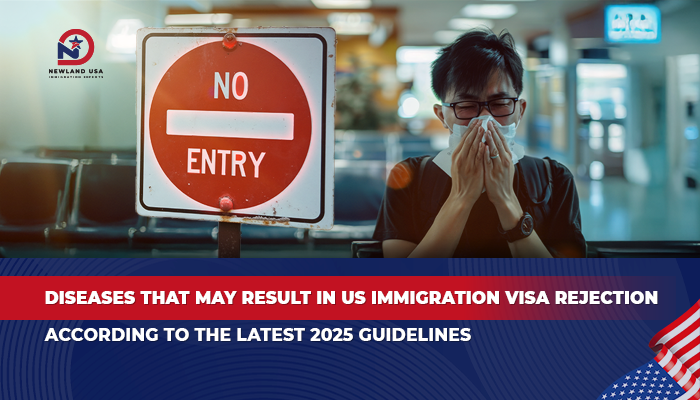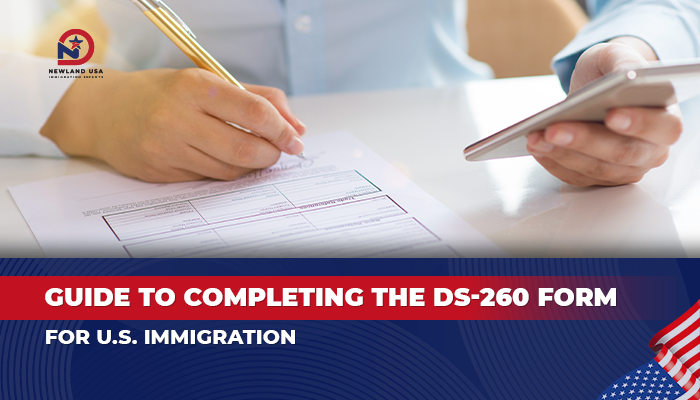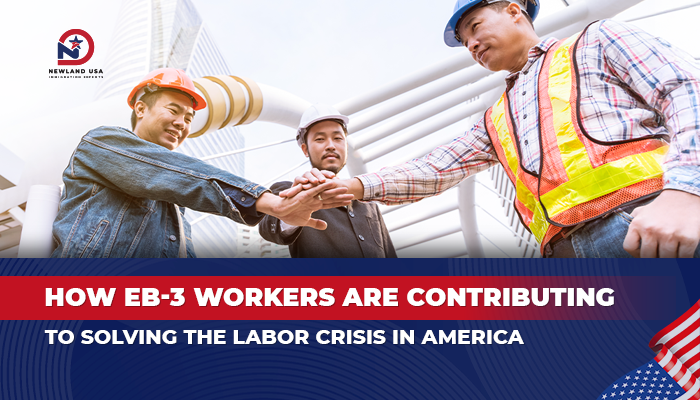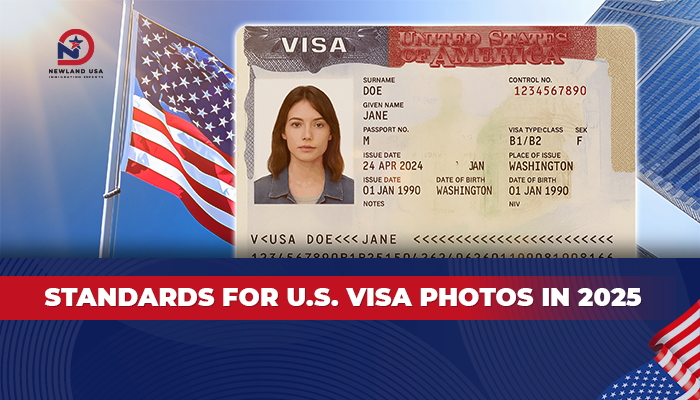6 Factors Affecting the Legal Status of Dependents in EB-5 Applications

When joining the EB-5 program, investors are not only concerned about getting a green card but also worry about the legal status of their accompanying family members. Understanding the factors that can impact dependents in EB-5 applications will help your family proactively protect their rights and avoid unnecessary risks throughout the U.S. immigration journey.
1. Overview of Dependents in the EB-5 Program
The EB-5 program is one of the most popular immigration pathways in the United States for foreign investors. A special feature of this program is that it allows investors to include family members in the same EB-5 application, giving the entire family the opportunity to receive green cards and live in the U.S.
According to USCIS regulations, dependents in an EB-5 application include the investor’s spouse and unmarried children under 21 years of age. Their legal status is entirely tied to the principal applicant’s investment and immigration petition.
The typical process begins when the investor invests capital into an approved project and submits Form I-526E to USCIS. When this petition is approved, the entire family can proceed to apply for green cards through a U.S. consulate abroad or adjust their status if already present in the U.S. The initial green card is valid for two years and comes with conditions. After the investment fully meets the job creation and capital maintenance requirements, the family can file Form I-829 to remove conditions and become permanent residents.
However, throughout this process, many changes can occur that directly impact the status of EB-5 dependents. Understanding these factors is extremely important so families can prepare and respond in a timely manner.
2. Six Main Factors Affecting EB-5 Dependents
2.1. Age Issues and the Risk of Aging Out at 21
One of the biggest concerns for families participating in the EB-5 program is the possibility of children “aging out” during the waiting period. According to regulations, children are only considered valid dependents if they are under 21 years old at the time the I-526E petition is filed.
Processing time for EB-5 applications can range from several months to several years, especially for countries with high application volumes. During this waiting period, many children pass the 21-year mark, resulting in loss of dependent status. A typical example is a young person who is 20 years and 3 months old when the family files the petition; after 14 months of waiting for approval, this person is 21 years and 5 months old and no longer qualifies for a green card as a dependent.
Fortunately, the Child Status Protection Act (CSPA) was enacted to support these cases. CSPA allows for “freezing” the child’s age by subtracting the I-526E processing time. However, to benefit from this protection, the beneficiary must meet the “sought to acquire” condition – meaning they must apply for a green card within 12 months of I-526E approval.
The issue becomes more complex when the investor’s country is experiencing visa retrogression. In this case, even though the I-526E has been approved, the family still must wait for their visa number to become current, preventing CSPA from providing protection. Currently, USCIS has warned about the possibility of retrogression in reserved visa categories, particularly affecting investors from China and India.
The recommended solution is for families living in the U.S. to consider filing concurrently for adjustment of status (I-485), employment authorization (EAD), and advance parole as soon as possible. This helps protect children from the risk of aging out.
2.2. Death of the Principal Applicant
Since the status of EB-5 dependents depends entirely on the principal investor, the death of the principal applicant can have serious consequences depending on what stage the EB-5 application is in.
If the investor unfortunately passes away before the I-526E is approved, the dependents will almost certainly lose their benefits. In this situation, the family must withdraw the petition and may have to restart the entire process with a new petitioner if eligible.
A more complex situation is when the principal applicant dies after I-526E approval but before family members receive their conditional green cards. In this case, there is still a possibility that dependents can continue to be processed and receive green cards, but specialized legal consultation is needed to determine the best approach.
The best scenario is when family members have already received conditional green cards. At this point, the legal status of dependents is not affected and they can still file Form I-829 to remove conditions and become permanent residents independently.

2.3. Principal Investor Abandons Permanent Resident Status
Another factor that can seriously impact dependents is the principal investor’s decision to abandon their green card. During the first two years when the green card is still conditional – that is, before Form I-829 is approved – if the principal applicant abandons their permanent resident status, family members will not be able to continue applying to remove conditions. This means they also lose their legal status in the U.S.
However, once Form I-829 has been approved and EB-5 dependents have become permanent residents, their status becomes completely independent. From this point on, even if the principal investor decides to abandon their green card for any reason, family members retain their permanent resident rights.
2.4. Project Fails to Meet Job Creation Requirements
One of the most important conditions of the EB-5 program is the obligation to create at least 10 full-time jobs for U.S. workers. This is not only a condition for the investor to remove conditions on their green card but also directly affects the status of dependents.
If the investment project encounters problems, is delayed, or fails completely resulting in insufficient job creation according to regulations, both the principal investor and family members face the risk of losing their legal status. Moreover, the investor may lose all the capital invested in the project.
However, immigration law allows for a solution: redeployment. If the initial project fails, the investor can transfer the capital to another qualified project in the EB-5 program. If redeployment is done within the proper timeframe and the new project meets job creation requirements, the legal status of both the investor and dependents will be maintained.
Therefore, thoroughly vetting projects before deciding to invest is extremely important. EB-5 dependents, although not directly involved in the investment, should also be concerned about this process, researching the reputation of the Regional Center, the project developer’s capacity, reviewing financial reports and job creation plans to ensure their rights are protected.

2.5. Investor’s Children Get Married
The condition for children to be considered dependents in an EB-5 application is not only based on age but also depends on marital status. The child must maintain unmarried status throughout the processing period to retain valid status.
If a child decides to marry before receiving a conditional green card, they will immediately lose their status as an EB-5 dependent. This means that even if the family’s EB-5 application is approved, the married child will not be granted a green card as a dependent.
To avoid this unfortunate situation, immigration experts often advise children of eligible age to consider postponing marriage plans until they have received their conditional green card. After obtaining permanent resident status, marriage no longer affects immigration rights. Additionally, if the child has financial capability, they may consider filing an independent EB-5 application as the principal investor.
2.6. Investor’s Spouse Gets Divorced
Similar to children getting married, the marital status of the investor’s spouse also plays a very important role in maintaining dependent status. To be considered as a dependent, the spouse must maintain a legal marriage relationship with the principal applicant throughout the processing period.
If the couple decides to divorce before Form I-485 (adjustment of status) or DS-260 (immigrant visa application at consulate) is approved, the spouse will immediately lose their status as an EB-5 dependent and cannot continue the green card process under this EB-5 application.
To protect both parties’ rights, the safest approach is to maintain marital status at least until both have received conditional green cards. After this point, if there is a decision to divorce, each person’s permanent resident status will not be affected. They can still independently file Form I-829 to remove conditions and become permanent residents.
3. Strategies to Protect Dependents’ Rights
Although the primary responsibility for meeting the conditions of the EB-5 program belongs to the principal investor, dependents can still proactively implement several measures to protect their rights.
First, family members should actively participate in the process of vetting and selecting investment projects. Understanding the project clearly, evaluating the reputation of involved parties, carefully reviewing financial reports and business plans will help the family make informed decisions and minimize the risk of project failure.
Second, dependents need to pay special attention to personal factors that may affect their valid status, such as age, marriage or divorce plans. Planning and arranging time appropriately for important life decisions will help avoid unwanted situations.
Third, closely monitoring the visa retrogression situation for their country and the processing timeline of the EB-5 application is necessary. For families from countries at high risk of retrogression such as China and India, taking early action – such as filing for adjustment of status as soon as possible – can provide significant time benefits.
Finally, maintaining regular contact with an immigration attorney and staying updated on changes in immigration policy will help the family adjust their strategy in a timely manner when necessary.

4. Conclusion
EB-5 applications offer an excellent opportunity for the investor’s entire family to immigrate to the U.S., however this journey also carries many risks that need to be carefully managed. Understanding the factors that can affect the legal status of dependents – from age issues, marital status, to investment project performance – will help families proactively protect their rights.
Newland USA, with an experienced team of experts and the motto “Secure settlement — Lifelong prosperity,” is ready to advise and support clients on information related to the EB-5 investment program. Please contact Newland USA via hotline 0785591988 or email: newsletter@newlandusa.asia for detailed and free consultation.
Learn more:













